Best perennial plants for pots – 16 beautiful varieties for stunning container displays year after year
Choose the right perennial plants for pots and you can enjoy eye-catching combinations of color, texture and scent throughout summer and beyond
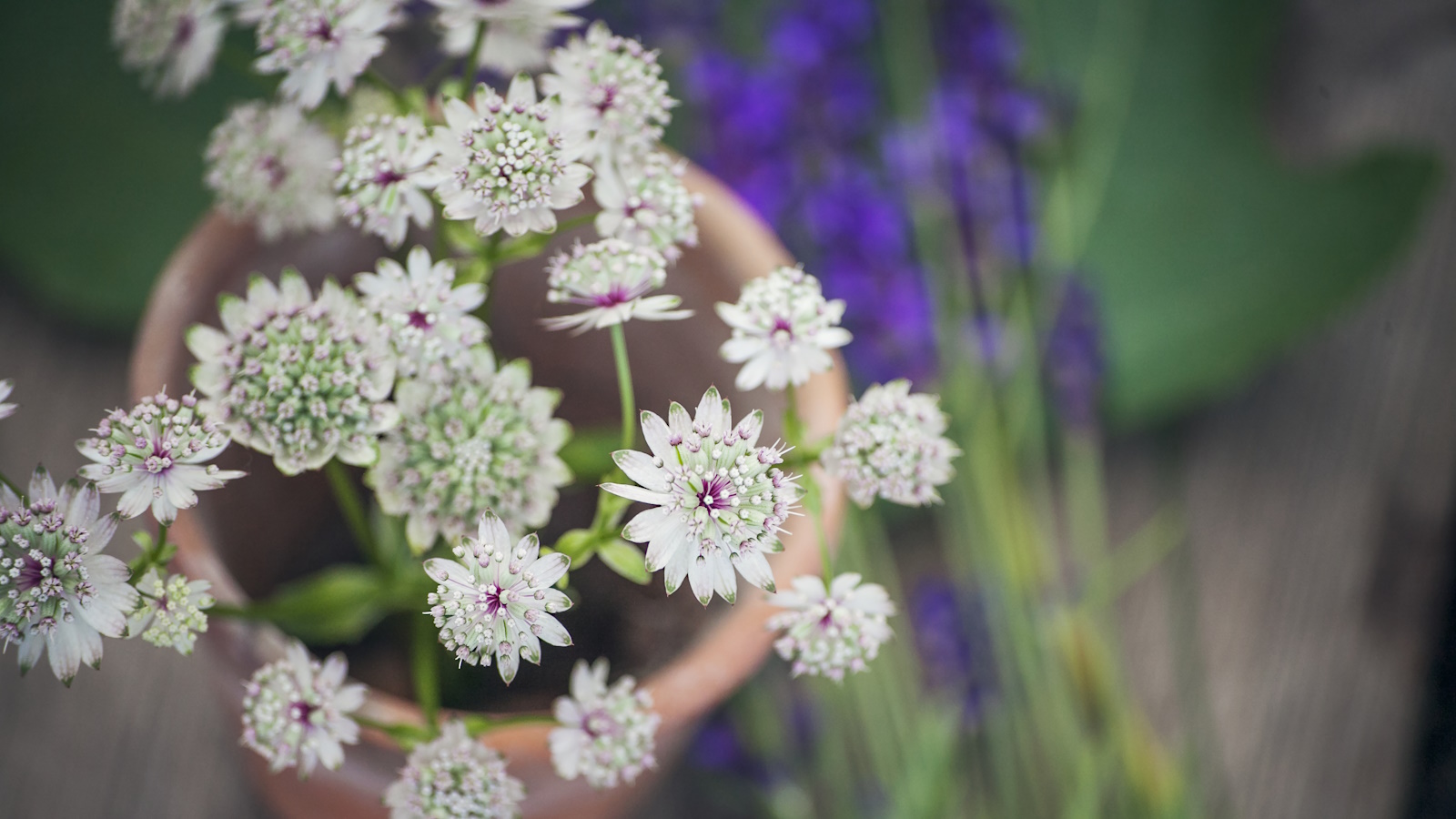
- 1. Centranthus ruber ‘Albus’
- 2. Salvia nemorosa ‘Caradonna’
- 3. Oenothera lindheimerei ‘Siskiyou Pink’
- 4. Dianthus ‘Passion’
- 5. Agapanthus ‘Silver Moon’
- 6. x Semponium ‘Destiny’
- 7. Hosta (Tardiana Group) ‘June’
- 8. Salvia ‘Royal Bumble’
- 9. Sedum Sunsparkler series ‘Lime Zinger’
- 10. Verbena officinalis var. grandiflora ‘Bampton’
- 11. Sanguisorba tanna
- 12. Stipa tenuissima
- 13. Erigeron karvinskianus
- 14. Astrantia major ‘Large White’
- 15. Geranium ‘Dreamland’ (‘Bremdream’)
- 16. Penstemon 'Hidcote Pink'
- FAQs

The best perennial plants for pots are ones that offer a long season of interest and are winter hardy, so you can rely on them to return again the following summer. Perennials work really well for informal displays that have a more natural feel and fit in with wildlife-friendly planting styles.
Container gardening has no limits when it comes to mixing up your planting styles and using some of the best perennial plants means you can enjoy a display from one summer to the next – and save on buying new bedding plants. Many perennials can be easily propagated too, making it easy to refresh your pots next summer or you can expand your display with your plants for free, by repeating your most successful planting combinations.
Repetition of plants and color in pots of different sizes is a key design trick to give your container gardening ideas a consistent look and a feeling of floral abundance through the season. Here, we look at 16 of the very best varieties that will thrive in container gardens, giving you long-lasting and versatile planting options.
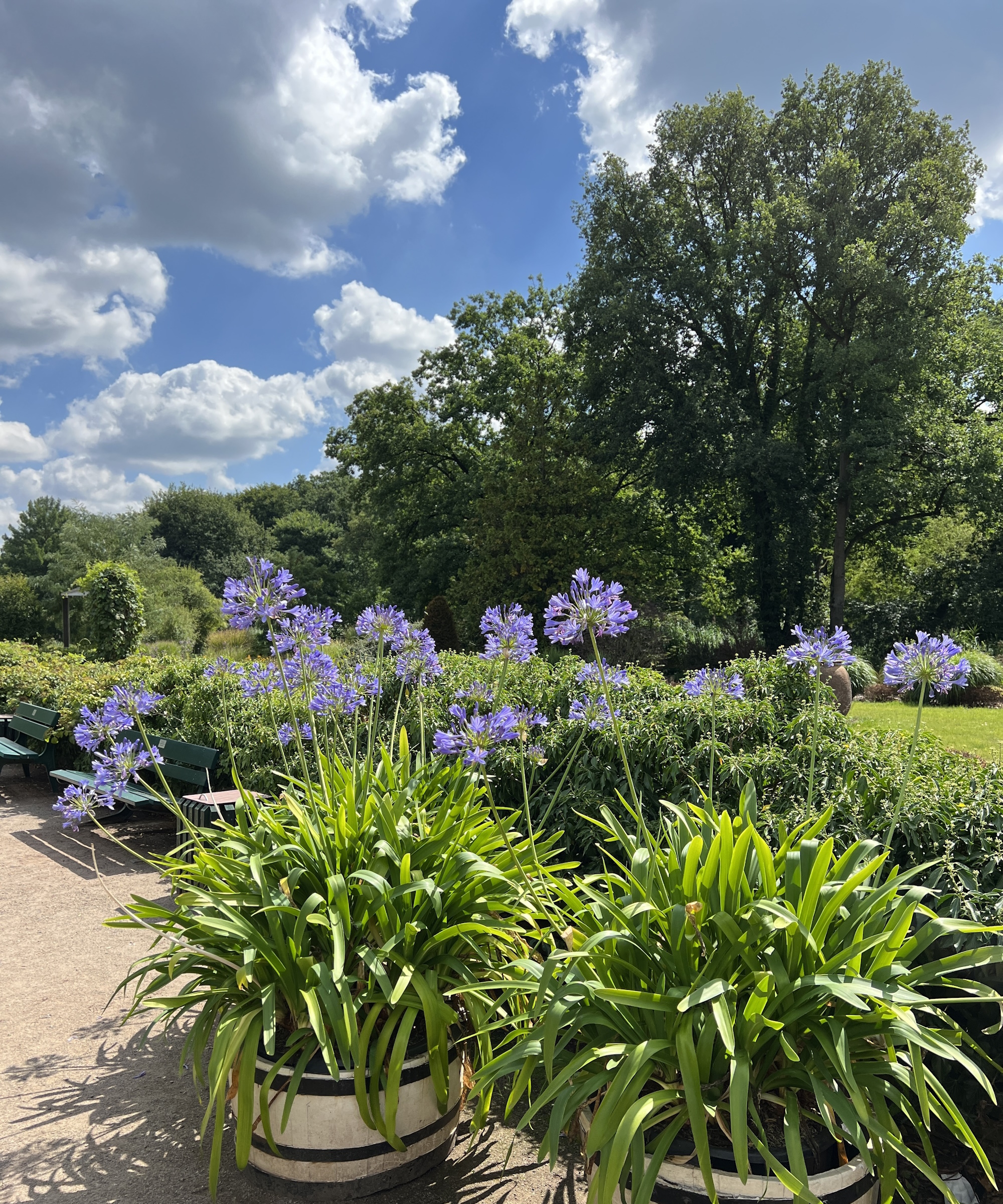
Keep your containers going with these perennial plants for pots
When it comes to container growing, it’s easy to be seduced by the flower power of colorful annual flowers and plants. But opting for the best perennial plants for pots will give you plenty of color and lots of interest through the summer.
And if you don’t have to refresh your planter box ideas every spring, it will save you time and money.
1. Centranthus ruber ‘Albus’
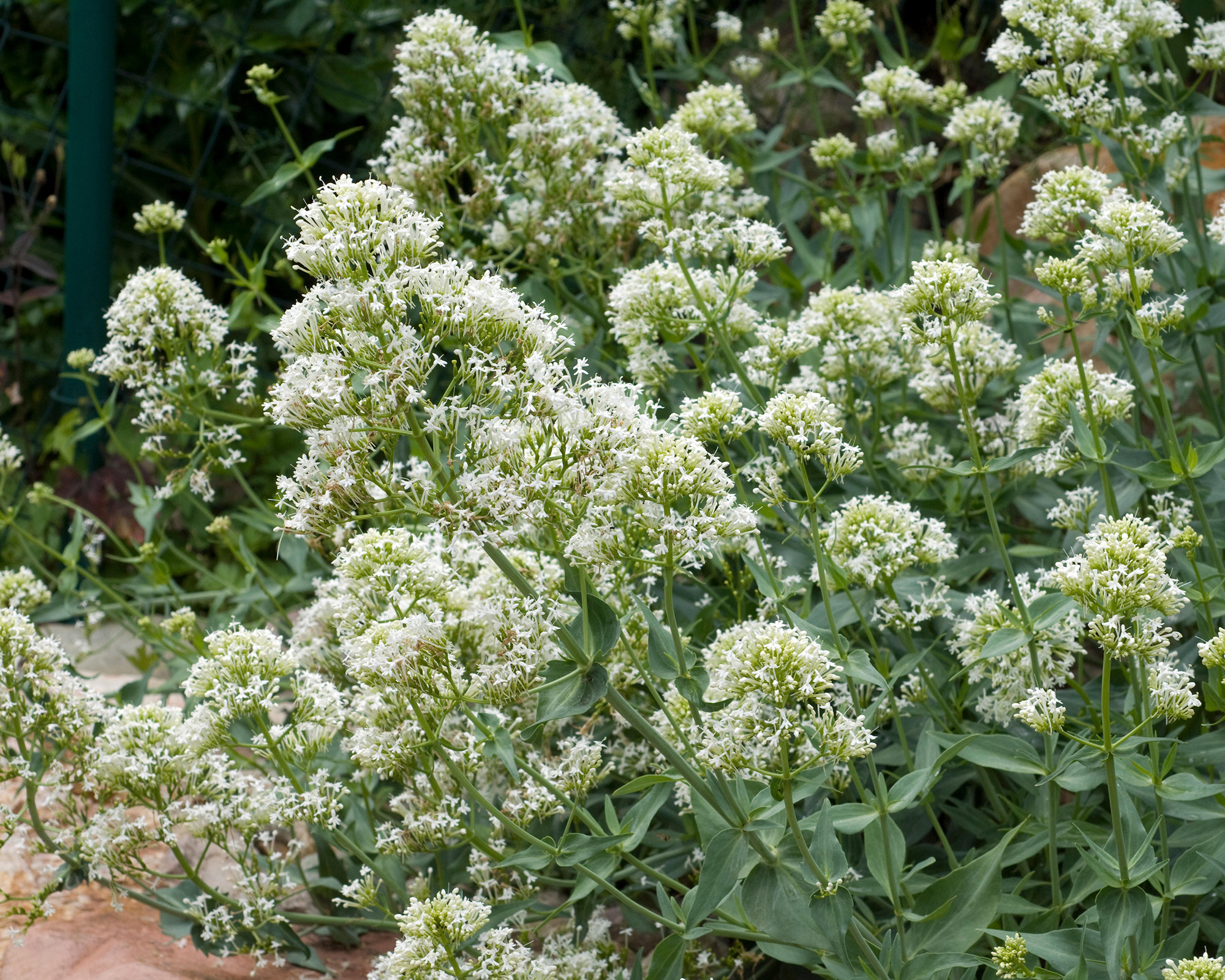
- Hardiness: USDA 5-8
- Height: 3ft (90cm)
- Spread: 2ft (60cm)
This white version of valerian is a fantastic addition to your planter box ideas thanks to its long-flowering season, pollinator-friendly blooms and tough temperament. The gray-green leaves offset the cones of small white flowers that keep coming right through the summer months.
It’s good for drought planting and requires very little pampering. It does need just a little deadheading to encourage fresh blooms and prevent it self-seeding and in fall, simply cut all the spent stems right back to the ground.
Design expertise in your inbox – from inspiring decorating ideas and beautiful celebrity homes to practical gardening advice and shopping round-ups.
2. Salvia nemorosa ‘Caradonna’
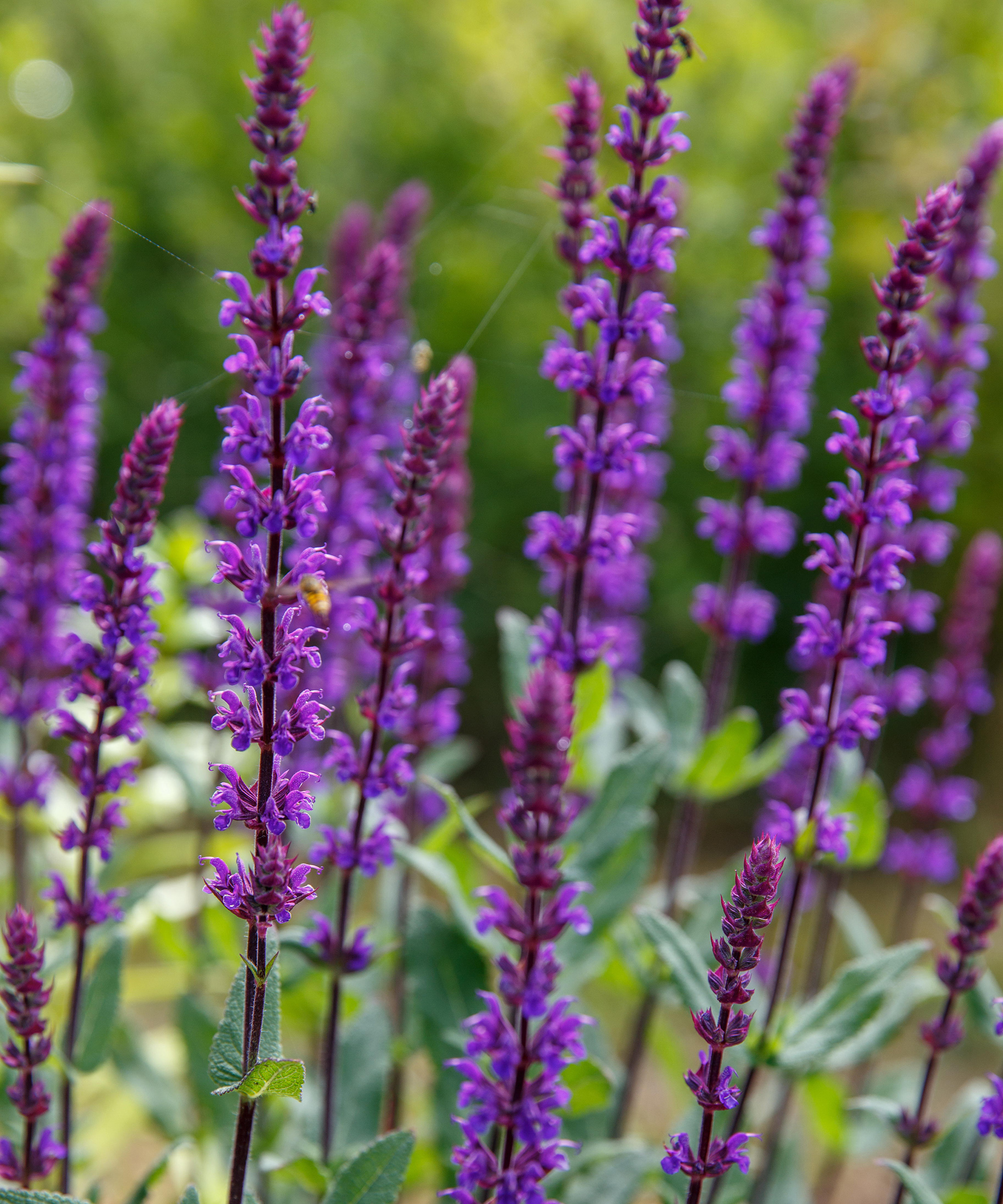
- Hardiness: USDA 4-9
- Height: 24in (60cm)
- Spread: 18in (45cm)
When considering how to grow salvias, there are many types to choose from. This is a fantastic cultivar, great for bringing a vertical accent and rich color to your summer container ideas. The stems are laden with intense purple flowers from summer to fall that draw in butterflies and bees.
It has a compact habit, making it perfect for containers and thrives in full sun, and suits drought tolerant combinations, so is great for a sunny patio or windowsill.
The super similar 'East Friesland' Salvia is available to order from Nature Hills.
3. Oenothera lindheimerei ‘Siskiyou Pink’
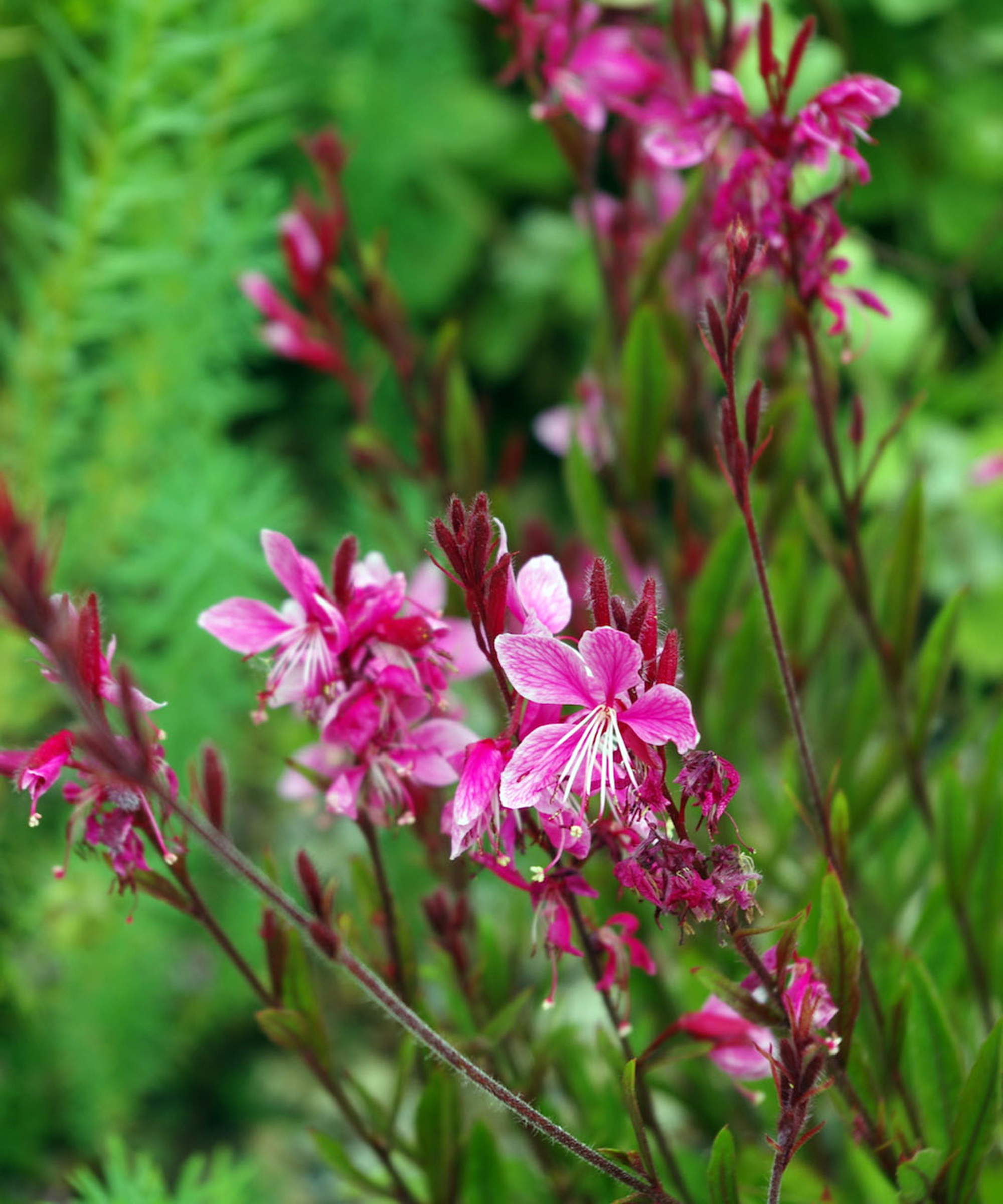
- Hardiness: USDA 5-9
- Height: 24in (60cm)
- Spread: 18in (45cm)
Formerly known as Gaura lindheimerei ‘Siskiyou Pink’, this is a charming late summer perennial that will lend an airy feel to larger, informal container displays and spring window box ideas. The bright pink starry flowers on dark maroon stems are ethereally pretty.
It’s a great choice for its long flowering season – late spring through to early fall – and is very drought tolerant too. It does need room to breathe, so combine it with softer grasses and lower growing spreading plants so it can take center stage.
You can find this variety of Gaura available at Walmart.
4. Dianthus ‘Passion’
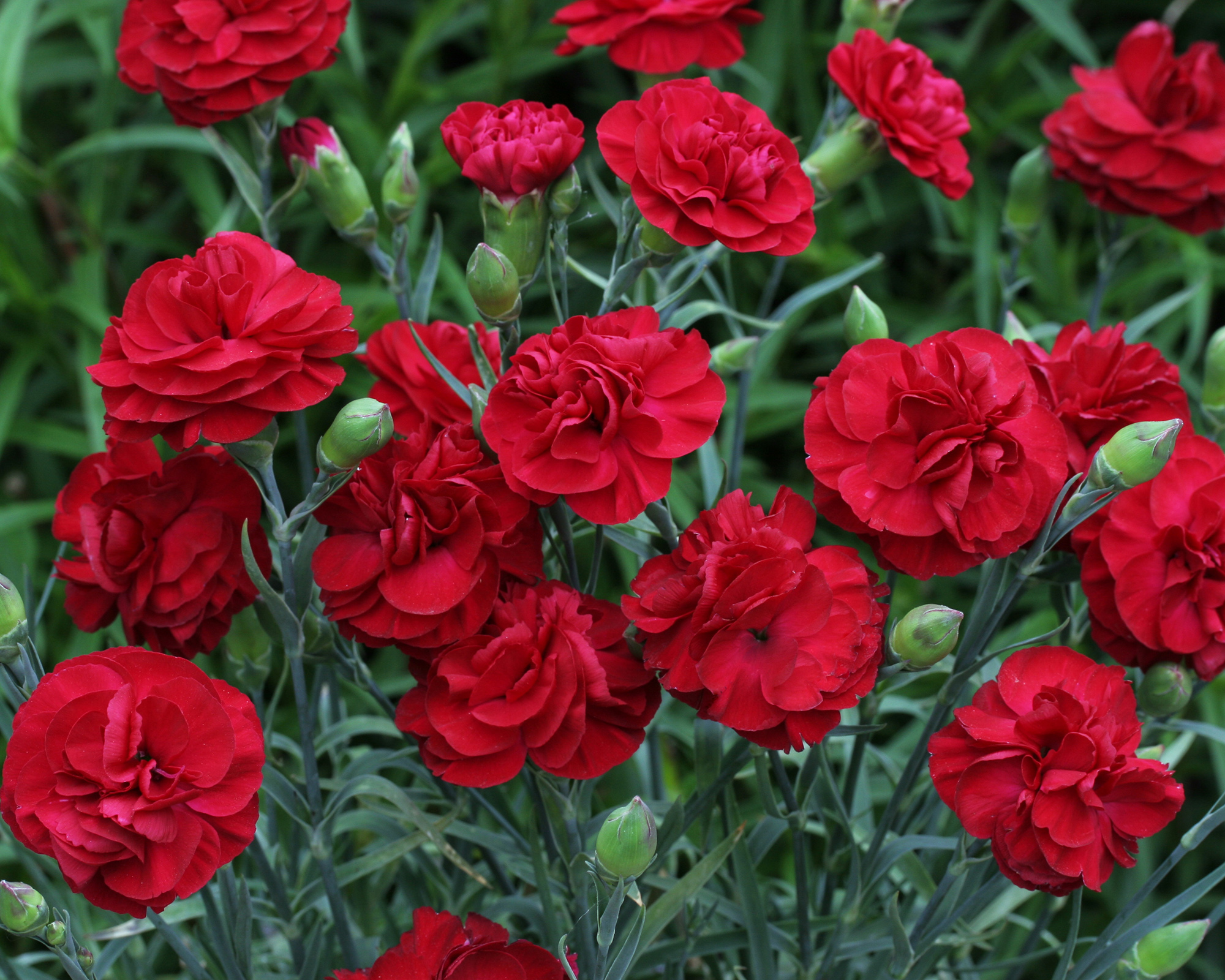
- Hardiness: USDA 5-9
- Height: 10in (25cm)
- Spread: 10in (25cm)
Dianthus make great displays on their own in pots, as table displays or for windowsills and as balcony plants. This is one of the 'Scent First' series of garden pinks, bred for their fragrance, so is great for containers near doorways or to make a patio smell nice.
With a long flowering season – the brilliant, scented red flowers appear from late spring through to the end of summer. Deadhead dianthus to prolong the season even further. Evergreen, glaucous foliage, combined with good drought tolerance makes this is an easy to grow pot-loving perennial.
5. Agapanthus ‘Silver Moon’
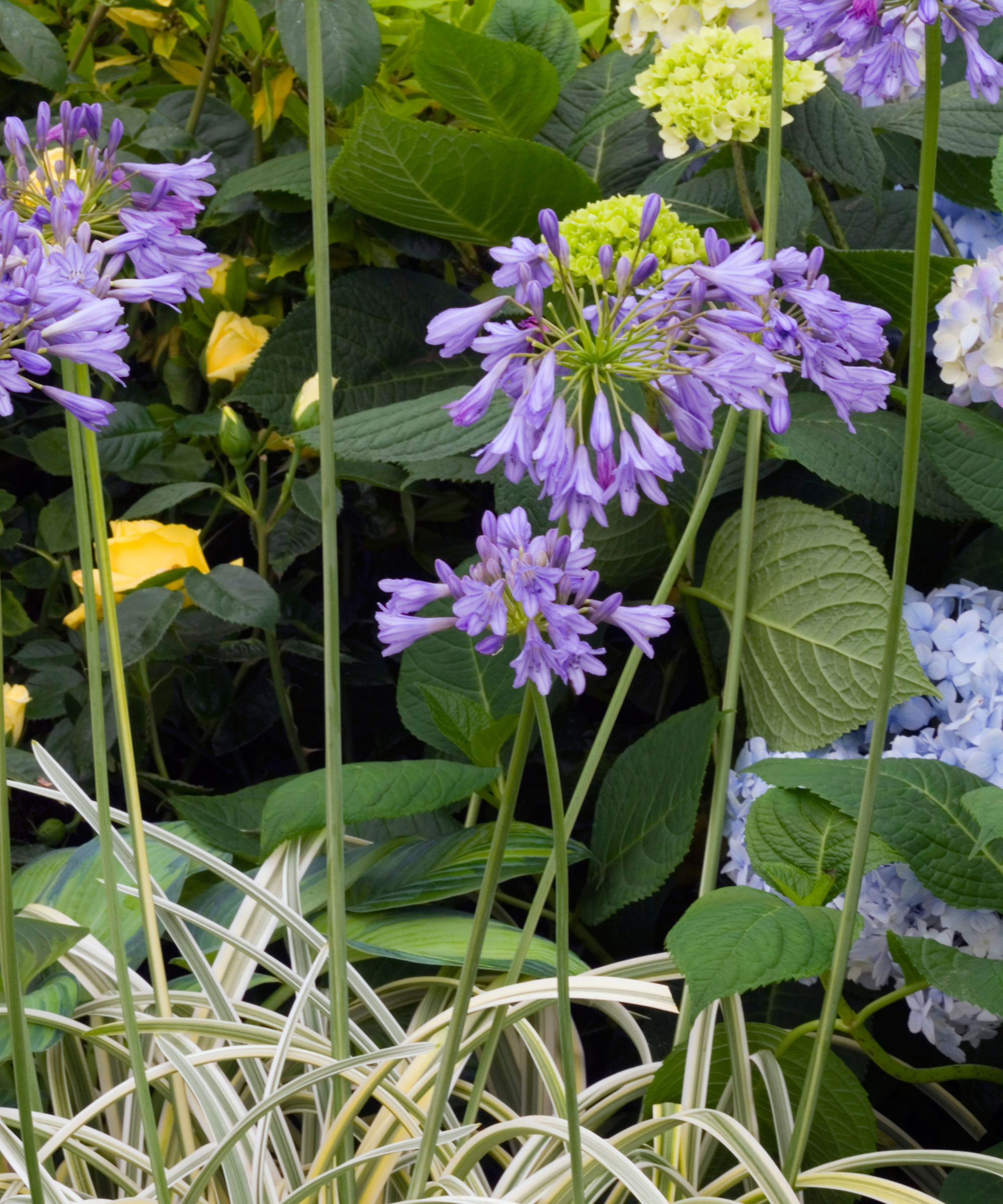
- Hardiness: USDA 7-11
- Height: 28in (70cm)
- Spread: 20in (50cm)
This agapanthus is a relatively new introduction, with strappy, variegated foliage adding to its ornamental value. It definitely works best as a solo display, so choose a tall style container to add to the height of the sky-blue blooms and use it to create a structural accent within your patio ideas or on a balcony where it will be baked in full sunshine.
It will need dividing and repotting every few years, but otherwise requires very little attention. Indigo frost is an agapanthus variety with variegated blooms, and is available from Nature Hills.
6. x Semponium ‘Destiny’
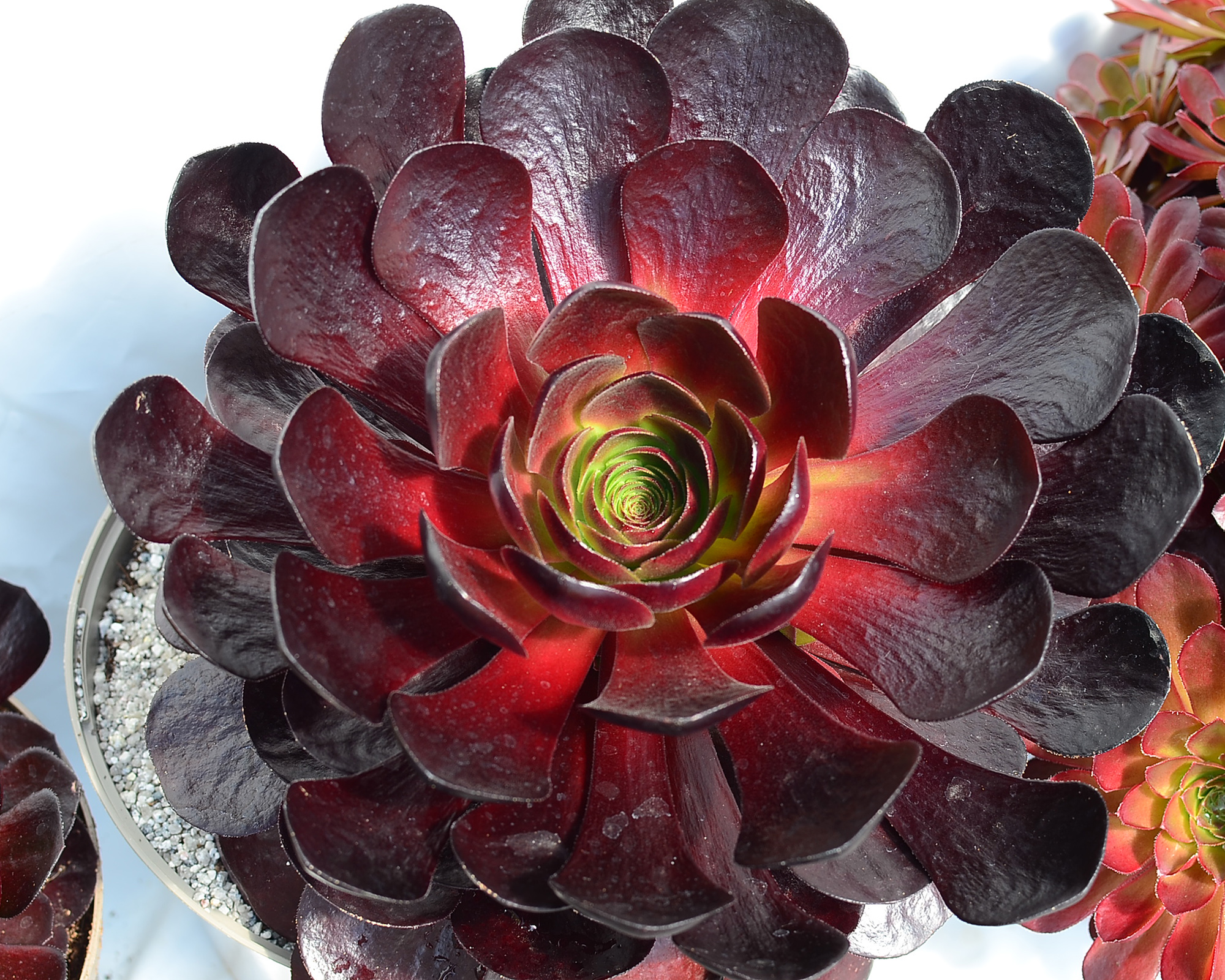
- Hardiness: USDA 9-11
- Height: 10in (25cm)
- Spread: 24in (60cm)
A new hybrid that combines the best features of the hardy sempervivum with dark-leaved aeonium in a huge evergreen succulent with a dinner-plate sized rosette of dark maroon leaves.
It’s a real stunner, perfect for planting up on its own in a large, bowl-shaped container filled with other sunny patio plants. It is winter-hardy in sheltered gardens, down to 28˚F.
7. Hosta (Tardiana Group) ‘June’

- Hardiness: USDA 3-9
- Height: 15in (37cm)
- Spread: 28in (70cm)
It’s hard to beat hostas in pots for a fabulous perennial foliage display and ‘June’ has the most beautiful painterly variegated greens. Grow in pots as a single plant display and to help protect those lovely leaves from slugs and snails.
While they're shade-loving plants, keeping them in a sunnier spot will also help to keep marauding molluscs away. Feeding helps the plant produce lush leaves and pretty mauve flowers in midsummer.
8. Salvia ‘Royal Bumble’
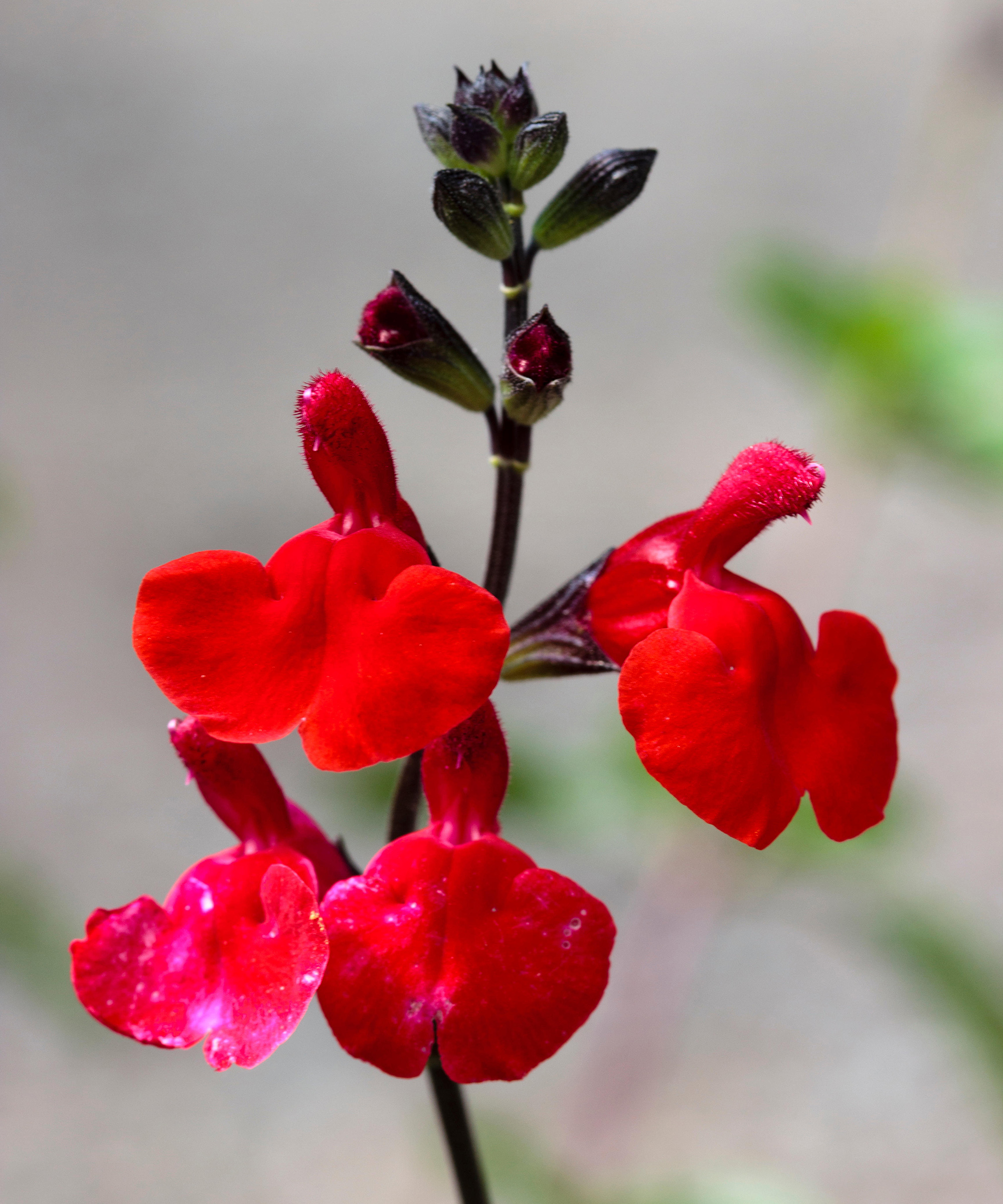
- Hardiness: USDA 7-10
- Height: 24in (60cm)
- Spread: 15in (40cm)
This is a sure-fire winner, adding a brilliant splash of red to your pots. The small but intense red flowers appear on dark, purple stems from spring right through to fall.
A good mid-height plant, it’s easy to combine with other perennial plants for pots. They're also easy to care for and will grow happily as window box plants and are very adaptable to sunny or light shady locations. A very similar bright red salvia 'flare' is available from Burpee.
It needs a top up of mulch in spring, around the base of the plant and just a light trim over winter to encourage new growth in the spring. Like all salvias, it’s one of the best container plants for pollinators.
9. Sedum Sunsparkler series ‘Lime Zinger’
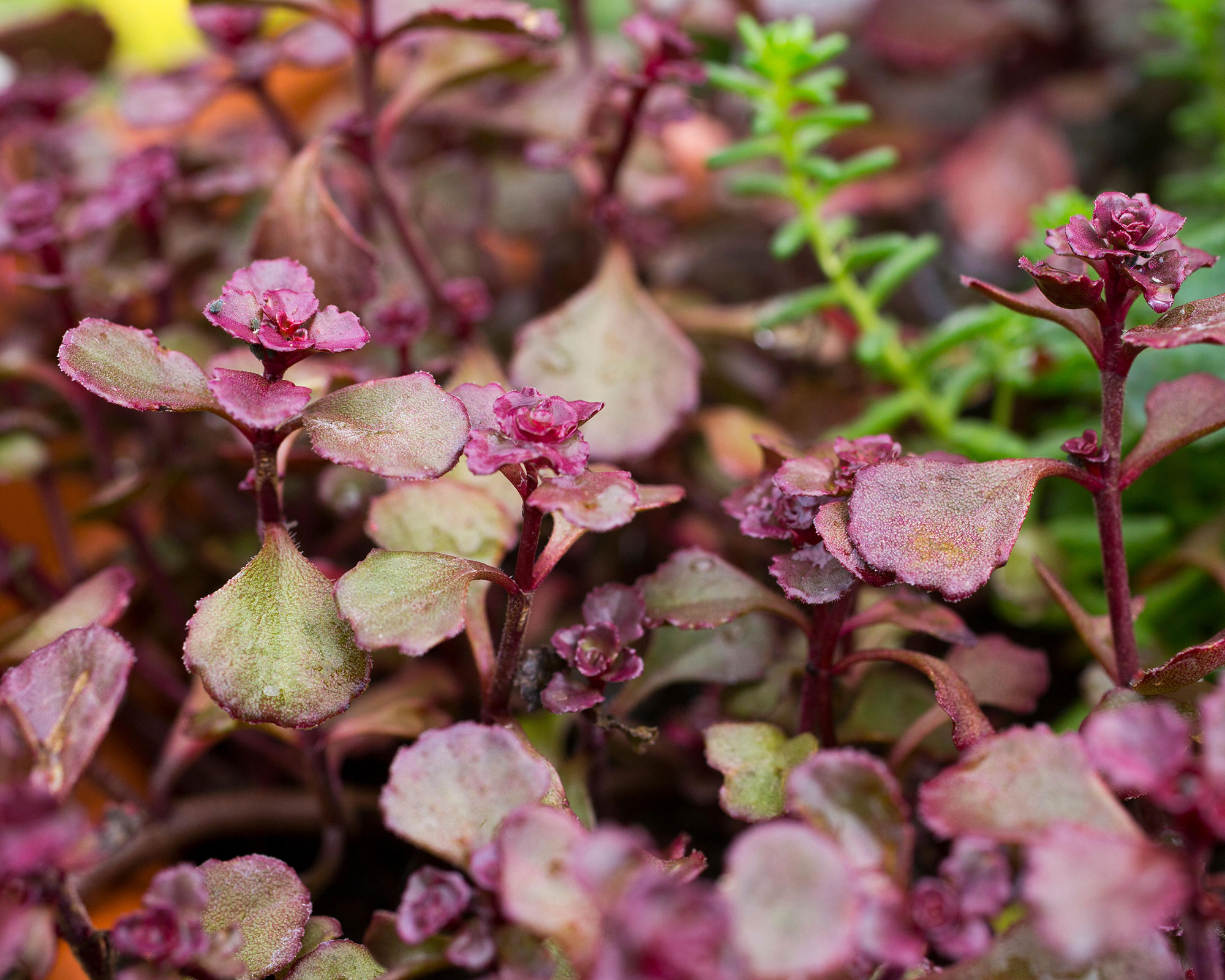
- Hardiness: USDA 4-9
- Height: 6in (15cm)
- Spread: 18in (45cm)
The 'Sunsparkler' group of hylotelephium plants is great for sunny containers, growing in dense leafy mats that make a great foil for taller plants through the summer.
The lime green of this cultivar is good for contrast with the rich maroon tones of the salvia and verbena. Typically hylotelephium flowers appear in the late summer bringing in the bees.
It’s a great drought tolerant plant, so very easy to care for and prefers full sun but will tolerate light shade too. It will die back completely over winter.
10. Verbena officinalis var. grandiflora ‘Bampton’
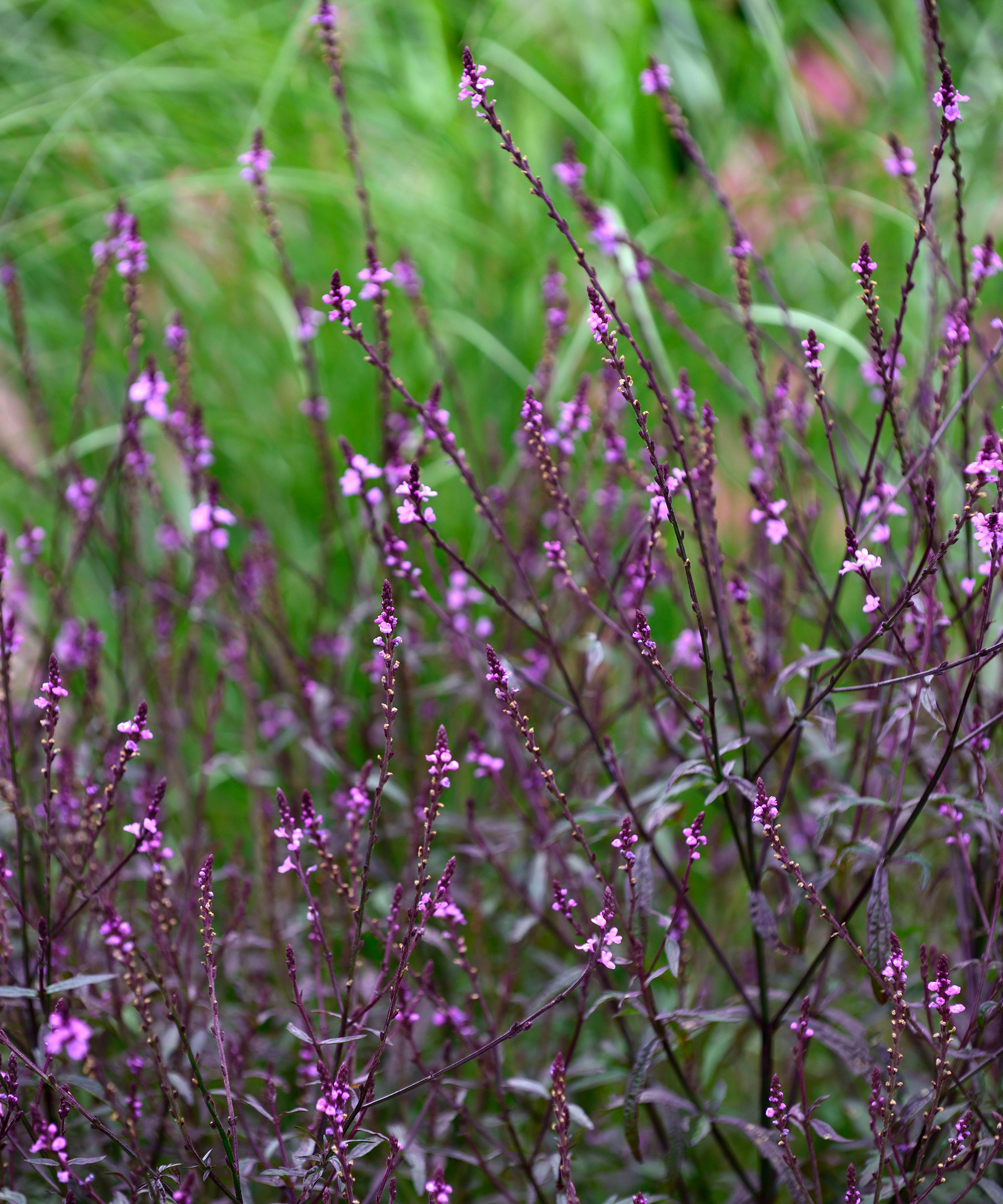
- Hardiness: USDA 4-8
- Height: 3.2ft (1m)
- Spread: 2.4ft (75cm)
Great for bringing some natural, ethereal, airy height to pots, the dark stems of this relatively new variety, topped with tiny bright pink flowers, keeps the interest through the height of summer.
Drought tolerant and not fussy about soils, verbena is a very low maintenance plant. The summer growth needs cutting back the following spring when young new shoots first appear, and mulching in fall will give the plant a bit of protection over winter.
11. Sanguisorba tanna
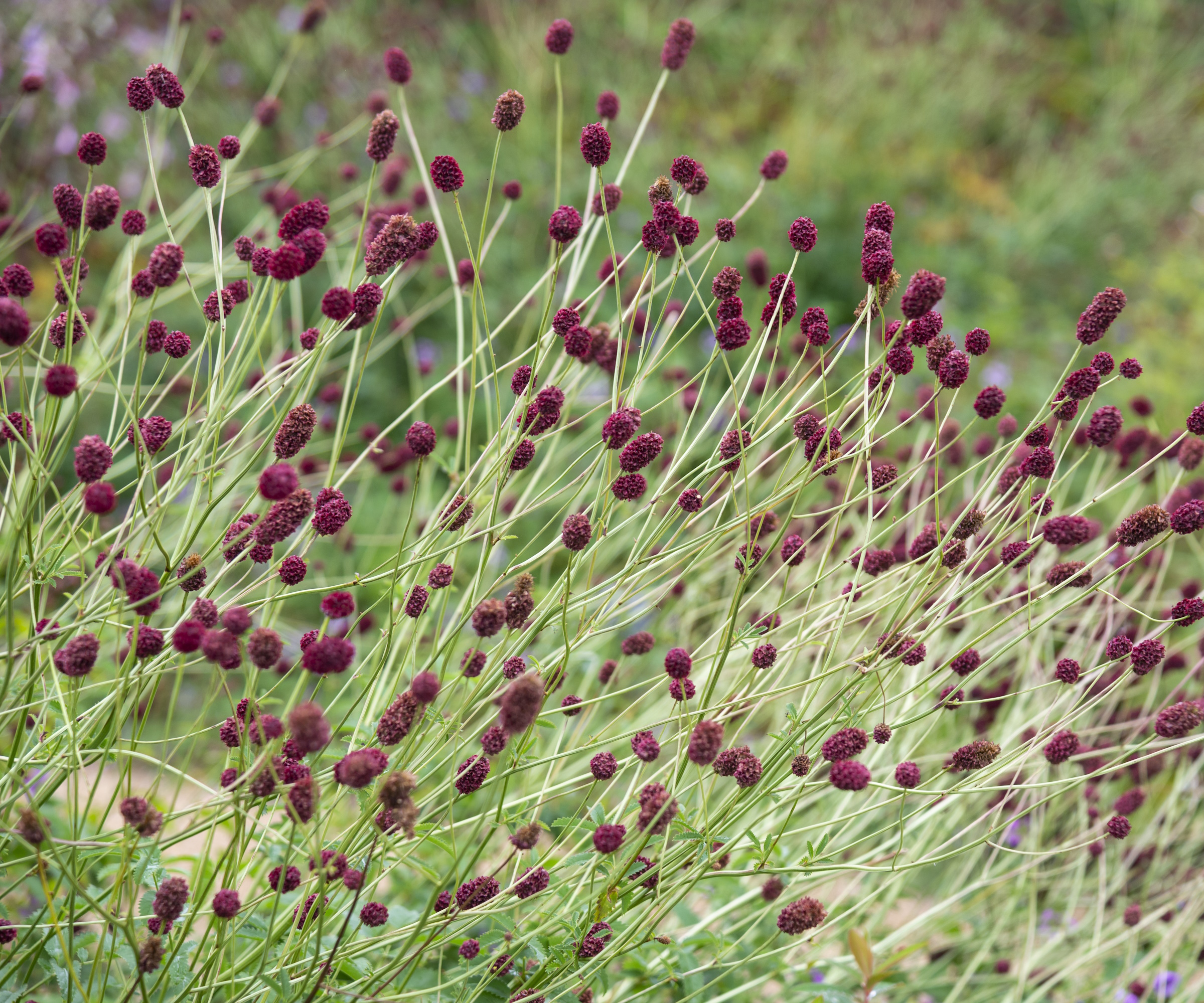
- Hardiness: USDA 4-8
- Height: 24in (60cm)
- Spread: 18in (45cm)
The distinctive, dark red pompom flowers of this burnet have a long season right through into fall and the blueish-gray foliage is equally attractive and good for adding a contrasting texture and color.
This is a compact sanguisorba, spreading slowly, so it makes a good perennial for larger containers. It does best in soil that doesn’t dry out, so make sure your container has a good balance of topsoil and compost and keep well watered.
12. Stipa tenuissima
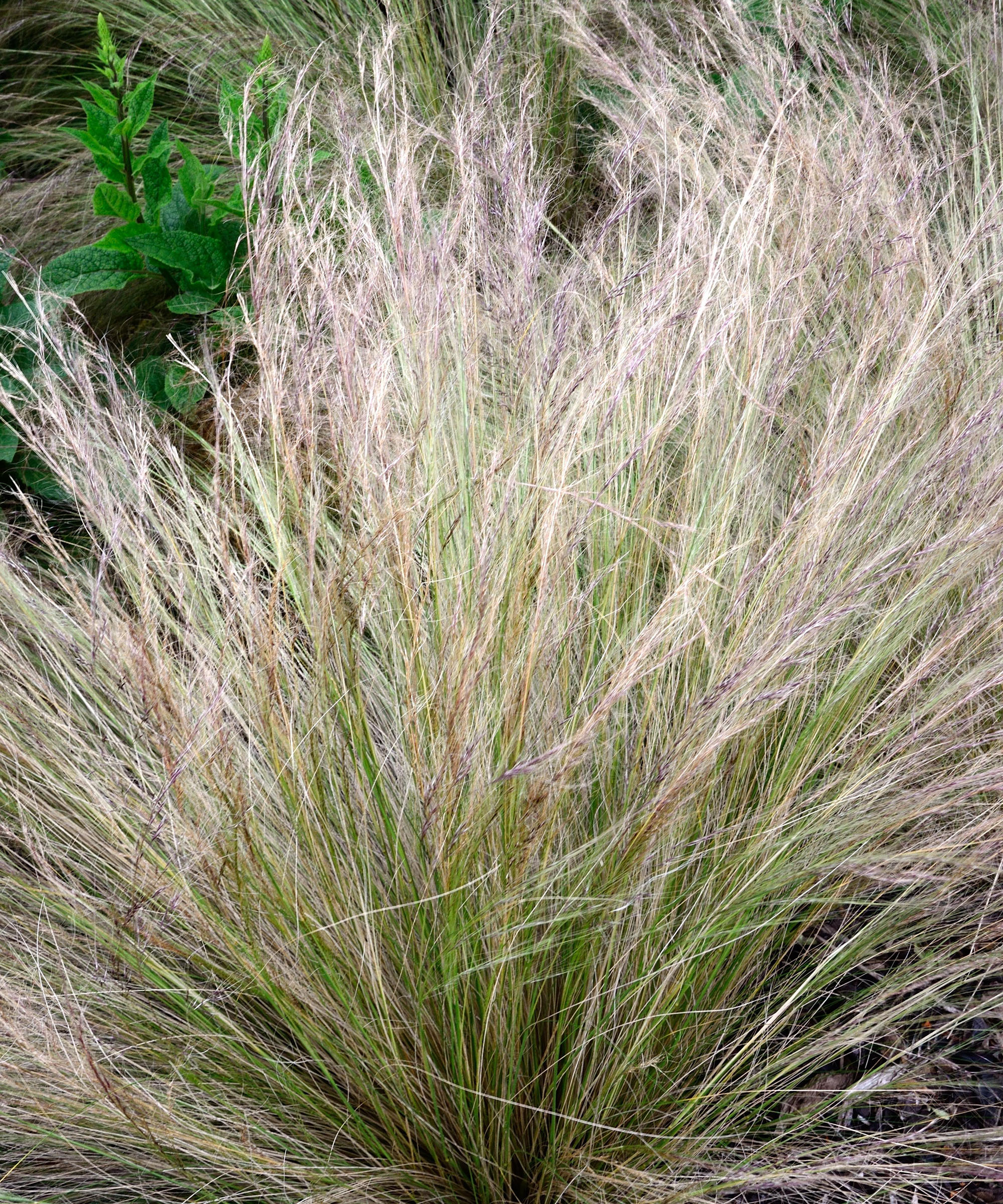
- Hardiness: USDA 7-11
- Height: 24in (60cm)
- Spread: 12in (30cm)
This soft and wispy grass adds movement and texture to your container display. It’s a semi-evergreen grass, that works well with flowering perennials and looks better planted in multiples of three, so choose a big enough container to accommodate a generous number of plants.
The golden, feathery foliage of this type of ornamental grass will look good until late summer and into winter and needs a light comb through to tidy up the old growth in spring.
13. Erigeron karvinskianus
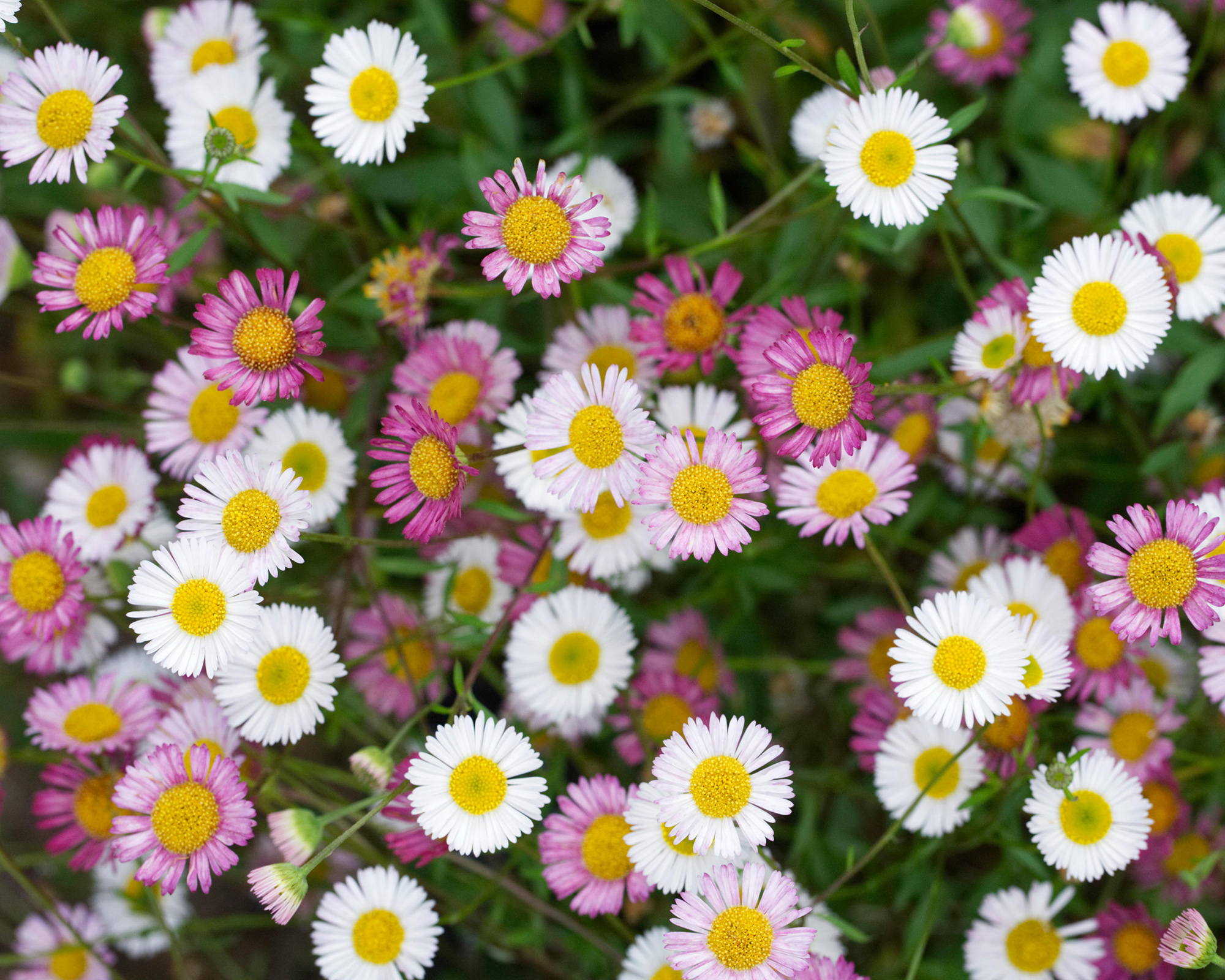
- Hardiness: USDA 6-9
- Height: 12in (30cm)
- Spread: 36in (90cm)
With a long flowering period, from mid spring to mid fall, the Mexican fleabane is a great-value plant, producing a profusion of typical daisy flowers, tinged with pink. It’s perfect for spilling over the sides of containers and completing your meadow, wild look.
It’s very drought tolerant and copes in most soils and part shade, and while it looks great solo, it’s a good companion for taller grasses and flowering perennials and it's loved by bees, making it one of the best plants for pollinators too.
You can find packs of 2000 Erigeron seeds at Walmart.
14. Astrantia major ‘Large White’
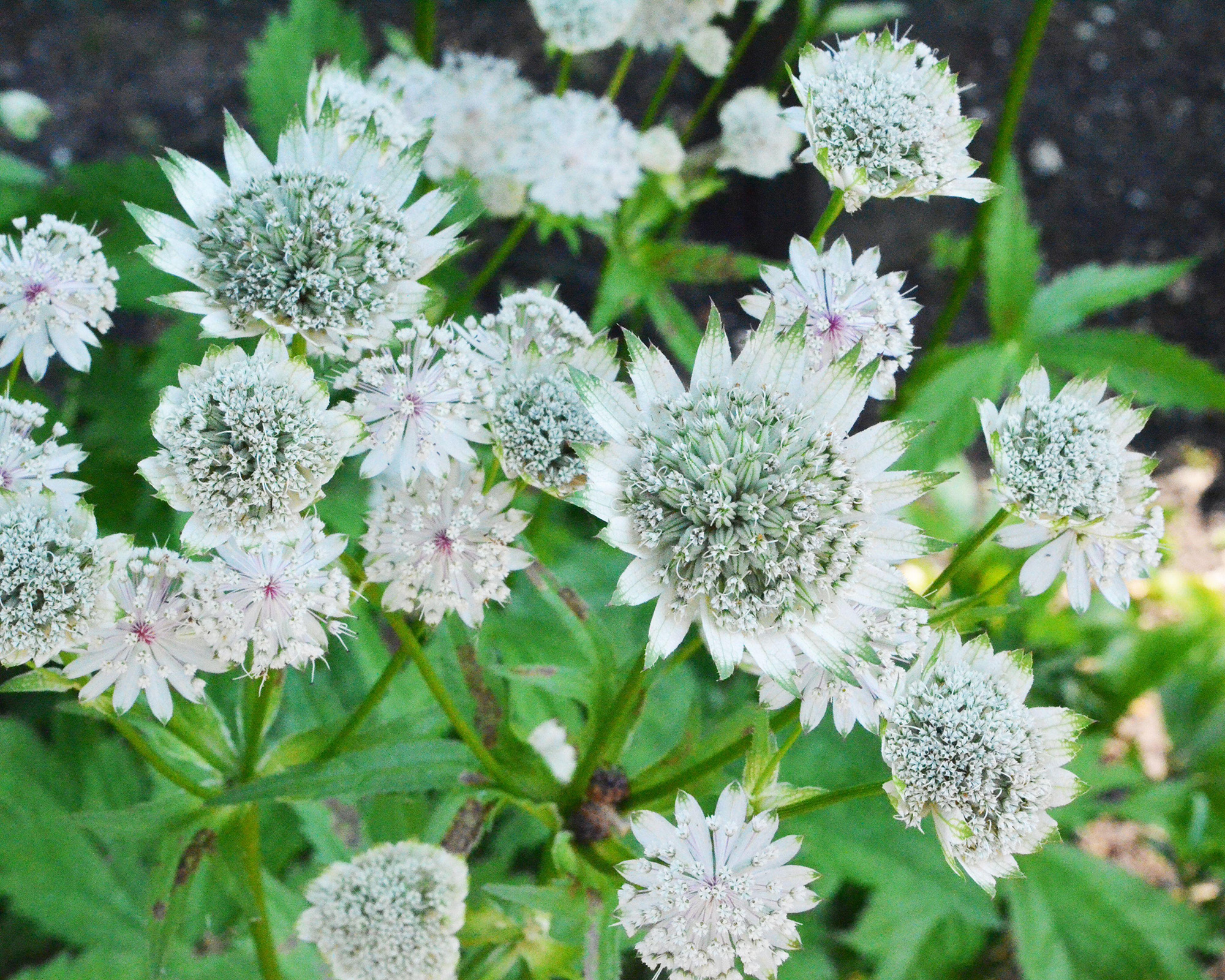
- Hardiness: USDA 5-8
- Height: 36in (90cm)
- Spread: 18in (45cm)
With flowers from the start of summer, this white-and-green-flowered masterwort is a great mid-height perennial for pots and good for cutting too. It looks good even when the blooms have faded and tolerates sun and shade, providing the soil is kept moist.
So, choose a larger container, add a generous portion of organic matter and topsoil to the planting mix and don’t let it dry out. It will need cutting back over winter and a spring mulching.
15. Geranium ‘Dreamland’ (‘Bremdream’)
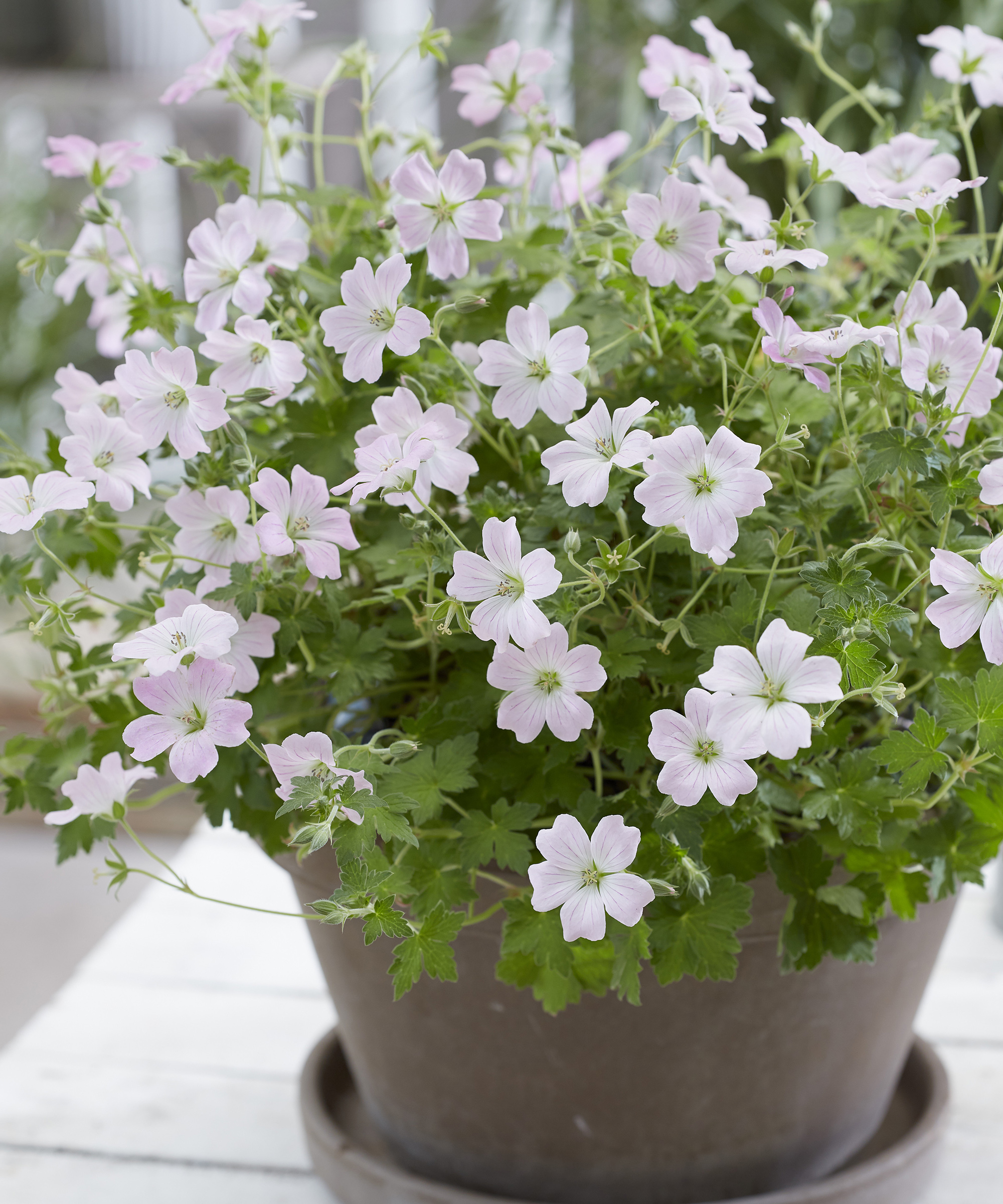
- Hardiness: USDA 5-9
- Height: 15in (40cm)
- Spread: 15in (40cm)
This spreading, mat-forming hardy geranium has attractive foliage and pale pink flowers that keep coming right through the summer and with its loose habit, it’s great for softening the edges of containers.
Good for the low-growing part of this combination, the pale flowers would complement taller astrantia and penstemon varieties. Remove spent flowers to keep it looking its best, but otherwise it’s very fuss-free and easy to grow. It will die back completely over winter. This 'boom chocolatta' variety of hardy geranium from Burpee is similar, with a darker purple color.
16. Penstemon 'Hidcote Pink'
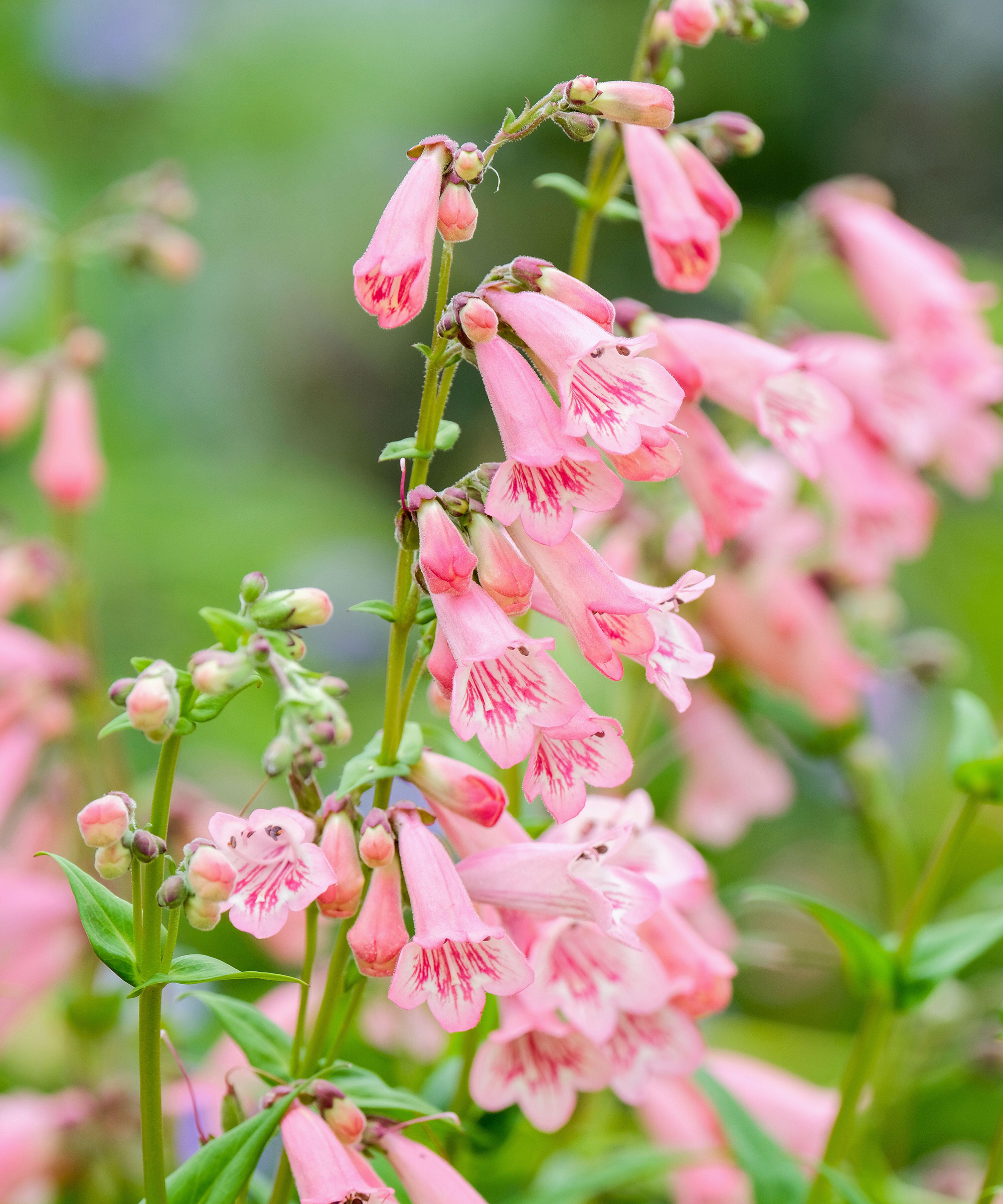
- Hardiness: USDA 7-10
- Height: 36in (90cm)
- Spread: 36in (90cm)
Great for adding a taller, vertical accent to planting combinations, with its elegant spires of foxglove-like tubular blooms, the striking pink flowers will keep going right through the summer until fall.
Good for full sun to part shade, when growing in containers, make sure there is plenty of drainage. A tough perennial, there’s no need to add any plant food through the summer. It's also a great flower for attracting hummingbirds to your yard.
FAQs
What perennials grow best in containers?
Most perennials can be grown successfully in containers, providing you pay attention to the right plant, right place guidance, just as you would with planting in a garden border. Make sure you consider your aspect too.
Soil types can be modified by choosing the right compost mix and you can add extra grit for drainage, or well-rotted organic matter and topsoil to help retain moisture, depending on the plant’s requirements.
Can perennials survive winter in pots?
The best perennial plants for pots will cope with cold winter conditions but might need added protection in extreme temperatures. You can achieve this with a good, thick mulch in fall; or by bringing them in to a sheltered area while plants are dormant.
Alternatively, to protect plants from frost you could insulate pots with thick hessian cloth or bubble wrap if the forecast stays below freezing for a longer amount of time.
If you want more cold-hardy options, the best winter plants for pots will ensure your container planting schemes can endure the cooler temperatures.
Growing in containers gives us so much freedom to move our plants around if we fancy a quick re-style, or change their position to give them better weather conditions in which to thrive. And of course, if you live and garden in a rental property, it means you can take your plants with you when you move.
There are so many more plants that will thrive in containers, for instance you might be interested in how to grow lavender in pots, or how to grow hellebores in containers, too.

In her years of gardening, Camilla has designed planting schemes for gardens large and small in and around London, written about plants and how to grow them, and worked on BBC gardening TV shows in the UK. She's also works as a therapeutic horticulturist, teaching growing for wellbeing and mental health.